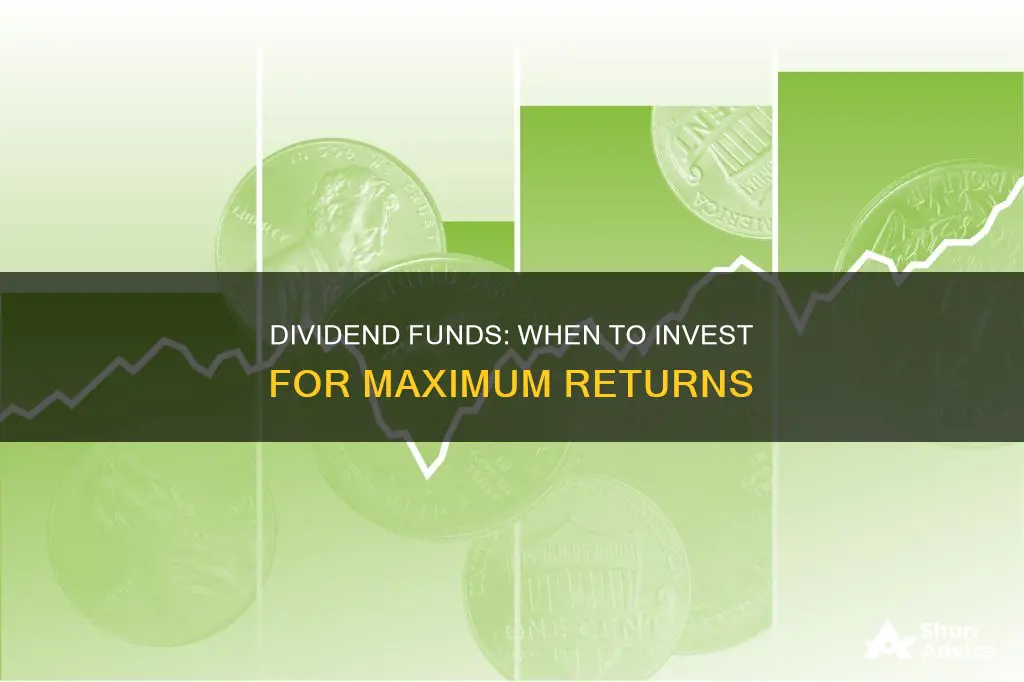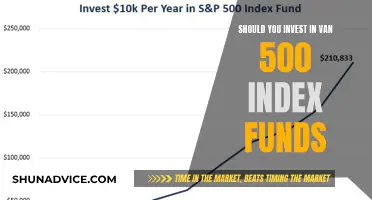
Dividend stocks are a great way to invest, offering dual benefits: income from dividends and capital appreciation, often outperforming with lower volatility. Dividend investing can be particularly useful when markets are volatile. Dividend-paying stocks provide investors with two sources of return: regular income from dividend payments and capital appreciation of the stock price.
Dividend stocks are shares in companies that regularly pay investors a portion of the company's earnings. Companies that pay dividends tend to be well-established, and dividend stocks may add stability to your portfolio. Dividends are usually paid quarterly, but schedules vary, and one-time special dividends are also possible.
When investing in dividend stocks, it's important to evaluate the dividend yield and payout ratio to understand how much of the company's income is going towards dividends. A good rule of thumb is to invest the bulk of your portfolio in index funds, but investing in individual dividend stocks directly has benefits, too.
What You'll Learn

Dividend stocks vs dividend funds
Dividend stocks are shares in a company that regularly pays out a portion of its profits to shareholders. Dividend funds, on the other hand, are exchange-traded funds (ETFs) or mutual funds that invest in a collection of dividend-paying stocks.
Both dividend stocks and dividend funds offer benefits to investors, but it's important to understand the differences between them before deciding which type of investment is right for you. Here are some key things to consider:
Performance and risk
Dividend stocks can offer dual benefits: income from dividends and capital appreciation. Historically, dividend stocks have outperformed the S&P 500 with less volatility. However, investing in individual dividend stocks can be risky if you don't know what to avoid.
Dividend funds, on the other hand, offer instant diversification. If one stock in the fund cuts or suspends its dividend, you can still rely on income from the others. Additionally, dividend funds tend to be less risky than individual stocks because they provide exposure to a diversified portfolio of stocks across multiple sectors.
Income and growth
Dividend stocks can provide a regular stream of income, making them attractive to retirees or those seeking passive income. They can also add stability to your portfolio since dividend-paying companies tend to be well-established and financially stable.
Dividend funds are tailored for investors seeking a consistent and reliable income stream. They invest in companies known for paying out dividends regularly, making them popular among retirees or those needing to supplement their income.
Management and expenses
Investing in individual dividend stocks requires more research and management on the part of the investor. You'll need to evaluate each stock's dividend yield, payout ratio, and financial health to ensure it fits into your overall portfolio.
Dividend funds, on the other hand, are managed by professional fund managers who make decisions about which stocks to include. Dividend funds also tend to have lower expense ratios than actively managed funds, and may have lower expenses than buying a diversified portfolio of individual dividend stocks.
Suitability
Both dividend stocks and dividend funds can be good options for investors, depending on their financial goals, risk tolerance, and investment style.
Dividend stocks may be a better choice for investors who prefer to select their own investments and have the time and knowledge to research individual stocks.
Dividend funds, on the other hand, are a good option for retirees or income-seeking investors who want a low-cost, diversified, and reliable source of income from their investments. They are also suitable for passive investors who don't want to spend a lot of time researching and analyzing individual stocks.
In general, it's recommended to invest the bulk of your portfolio in dividend funds or ETFs for instant diversification and reduced risk. However, investing a small portion of your portfolio in individual dividend stocks can offer the benefit of a potentially higher yield.
Taxes
When investing in dividend stocks, it's important to consider the tax implications. Dividends in taxable brokerage accounts are taxed in the year they are received, and they may not be as tax-efficient as other investment options for high-income earners.
Dividend funds, on the other hand, offer potential tax benefits. Qualified dividends are usually taxed at a lower rate than ordinary income, which can make a noticeable difference in your returns over time.
Both dividend stocks and dividend funds can be great investment options, offering income and long-term growth potential. The best choice for you will depend on your financial goals, risk tolerance, and investment style. If you're looking for a diversified, low-cost, and reliable source of income, dividend funds may be the better option. If you prefer to select your own investments and are comfortable with the additional research and risk involved, dividend stocks may be a better fit.
Cooperative vs Investment Fund: Understanding the Key Differences
You may want to see also

Dividend yield
A dividend yield of 5% means that for every $100 of stock, the company will pay you $5 each year in dividend income.
When evaluating dividend stocks, it is important to compare the dividend yield of different stocks within the same industry to identify those with higher yields. Be cautious of excessively high yields, as they may indicate potential risks or issues with the company.
A good rule of thumb is to invest the bulk of your portfolio in index funds, as they offer instant diversification. However, investing in individual dividend stocks allows investors to build a custom portfolio that may offer a higher yield than a dividend fund.
Low-Cost Index Funds: When to Steer Clear
You may want to see also

Dividend growth
When considering dividend growth investing, it is important to evaluate the following:
- Dividend yield: This is calculated by taking the annual per-share dividend and dividing it by the stock price. It is a key metric for understanding dividend stocks and comparing opportunities across different companies, mutual funds, or ETFs. However, a high dividend yield may indicate an unsustainable payout or a company facing challenges, so further research is necessary.
- Payout ratio: This is the dividend as a percentage of a company's earnings. Generally, a lower payout ratio indicates a more sustainable dividend. A payout ratio above 100% suggests the company may need to reduce its dividend or that its earnings are under pressure.
- Track record: Look for companies with a history of stable and growing dividends. A long track record of consistently increasing dividends indicates a company's commitment to returning profits to shareholders.
- Company health: Dividend growth companies are usually well-established, profitable, and committed to paying dividends. They tend to be larger, more mature companies with stable and growing businesses.
Remember, dividend income is not guaranteed, and companies can cut or eliminate dividends during financial difficulties. Therefore, it is essential to conduct thorough research and consider the overall health and prospects of the company before investing.
Vanguard Mutual Funds: Best Retirement Investment Options
You may want to see also

Dividend capture
The dividend capture strategy is a timing-oriented investment strategy that involves purchasing and later selling dividend-paying stocks. The method calls for buying a stock just before the ex-dividend date to receive the dividend and then selling it once it has been paid. The purpose of the two trades is to receive the dividend instead of investing for the longer term.
The dividend capture strategy relies on four key dates:
- Declaration date: The board of directors announces the dividend well before it’s paid.
- Ex-dividend date: Also called the ex-date, the security begins trading without the right to the dividend of the month or year, depending on when it’s paid. The day before the ex-dividend date is the last day to buy the stock and be eligible for the payment. The ex-date is also when the stock price usually drops in line with the declared dividend amount.
- Date of record: This is when a company logs which shareholders are eligible to receive the dividend.
- Pay date: This is when the company issues its dividend payments.
Theoretically, the dividend capture strategy shouldn’t work. If markets operated with perfect efficiency, the share price would reflect the dividend amount until the ex-dividend date, when the stock price would fall by the dividend amount. Since markets do not run with such mathematical perfection, this doesn’t usually happen. More often, a trader captures a significant part of the dividend despite selling the stock at a slight loss following the ex-dividend date.
The dividend capture strategy has several potential benefits and drawbacks. On the positive side, it can deliver quick returns, and investors' capital isn’t tied up for long periods. It can also be widely applied since there are thousands of dividend-paying companies, allowing investors to use this strategy in diverse markets. In addition, the strategy could produce regular income from dividends, making it appealing to income-focused investors.
However, the strategy also carries several downsides. There are tax implications to consider, as dividends received beyond a certain threshold are taxable. In some jurisdictions, dividends are taxed at a higher rate if the shares aren’t held for a specific period. Another risk is price fluctuations; all dividend stocks will often drop in value on the ex-dividend date, usually by about the amount of the dividend. If the stock price doesn’t rebound quickly, investors may be left with a net loss. Finally, the strategy requires routinely buying and selling shares, which can lead to high transaction costs that would eat into the profits.
Navigating Investment Funds: Knowing When to Change for Success
You may want to see also

Dividend investing in long-term portfolios
Dividend investing can be a great strategy for long-term portfolios. Dividend stocks have historically outperformed the S&P 500 with less volatility, making them attractive to investors looking for lower-risk investments, especially those in or nearing retirement.
Dividend-focused investing has also demonstrated the ability to lower volatility and buffer losses during market downturns. Dividend-paying companies tend to be more stable, higher-quality businesses that have weathered downturns and are likely to continue paying dividends.
Dividend stocks provide two sources of return: regular income from dividend payments and capital appreciation of the stock price. This total return can add up over time, especially when dividends are reinvested to buy more shares through a dividend reinvestment plan (DRIP).
When investing in dividend stocks for the long term, it's important to focus on the company's ability to consistently increase its dividend rather than solely on its dividend yield. A company with a sound financial profile focused on a growing industry is more likely to sustain dividend payments over time.
Additionally, it's crucial to remember that dividends are never guaranteed. Companies can and do reduce or even eliminate dividends, as seen during the COVID-19 pandemic. Therefore, it's essential to diversify your portfolio and not solely focus on dividend-paying stocks to ensure good long-term performance.
- Evaluate the dividend yield, payout ratio, and the company's ability to sustain dividend payments over time.
- Look for companies with a track record of stable and growing dividends.
- Consider investing in dividend-focused exchange-traded funds (ETFs) or mutual funds for instant diversification.
- Reinvest dividends to boost your overall returns through the power of compounding.
- Be mindful of the tax implications of dividend income, especially in taxable brokerage accounts.
By following these strategies, investors can incorporate dividend investing into their long-term portfolios to generate income, reduce volatility, and potentially enhance their overall investment returns.
U.S.A.A. Mutual Funds: Where to Invest Wisely
You may want to see also
Frequently asked questions
Dividend funds are a type of investment fund that focuses on investing in the stocks of companies that pay dividends. These funds offer investors access to a diversified portfolio of dividend-paying stocks, providing regular income through dividend payments.
Dividend-paying companies typically have a track record of stable and growing dividends. You can use stock screeners to identify these companies and review their dividend history. Dividend yield, payout ratio, and consistency are key metrics to consider.
Dividend funds can be a good investment option for those seeking regular income, lower volatility, and a more stable investment. They are often attractive to investors in or nearing retirement. However, it's important to remember that dividends are not guaranteed and can be cut or suspended.
You can invest in dividend funds by purchasing shares of dividend-focused mutual funds or exchange-traded funds (ETFs). These funds offer instant diversification and provide access to a basket of dividend-paying stocks with a single investment.
Investing in dividend funds offers instant diversification, reducing the risk associated with picking individual stocks. Funds also provide access to a diversified portfolio of dividend stocks with a single transaction, making it a more convenient option for investors who don't want to research and select individual stocks.







